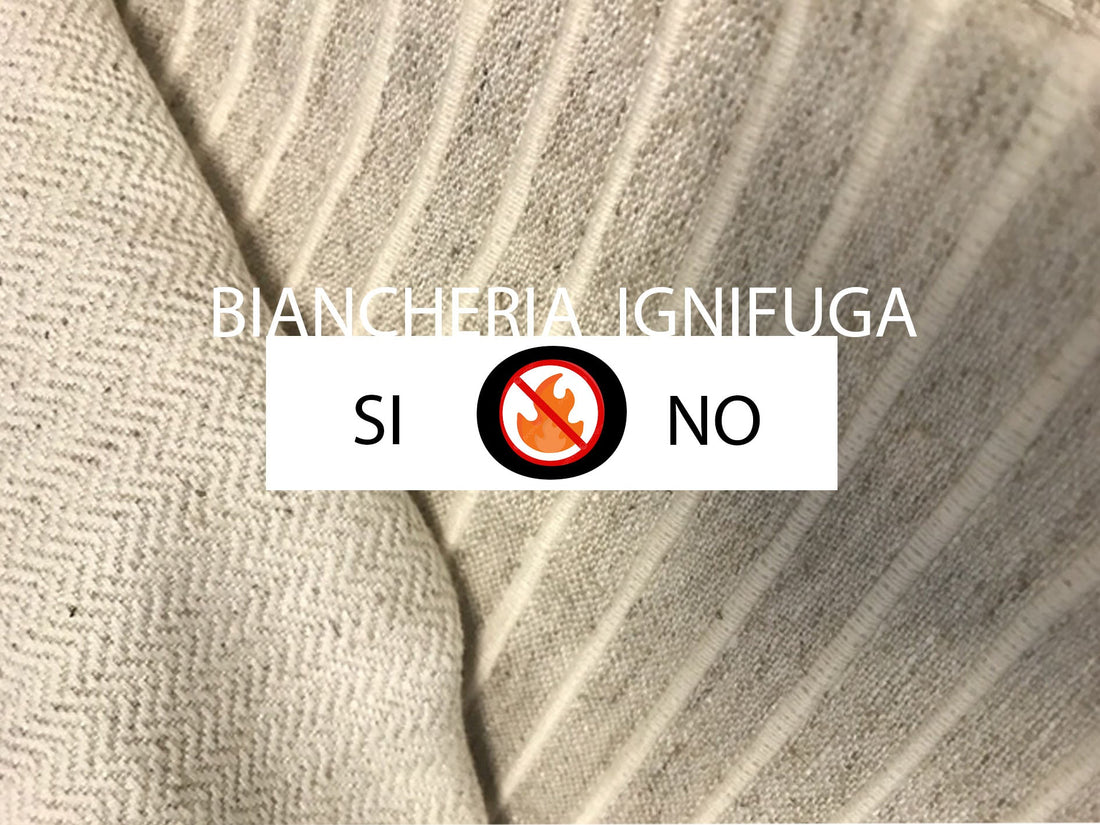
Do you have a structure and do not know which linen to choose? When to use fireproof linen.
Share

Choosing linen for your facility, that is quality and safe for your guests, is not trivial. The market offers a vast choice, which sometimes confuses and leads to wrong choices. Our over thirty years of experience leads us to recommend the use of fireproof linen to every structure.
Why? First of all we want to give some information about fire retardant fabrics.
Fireproof linen: the characteristics.
Let's start with the name: the term fireproof comes from the Latin ignis, meaning fire, and indicates the characteristic of resisting fire.
When talking about fire-resistant linen we must first make a distinction between:
fireproof linen, which does not burn when exposed to flame
fire retardant linen, which means that it burns when the temperature exceeds a certain threshold and in any case burns very slowly.
The linen can be made using:
Naturally flame retardant fabrics
flammable fabrics subjected to fireproofing treatments
The fireproof fabric by nature, as the wording implies, has a chemical composition that makes it more or less resistant to fire. It has not undergone treatments, therefore resulting free of applied surface substances. The flame-retardant properties do not decay either after maintenance and washing, or based on the conditions of use.
Instead, flammable fabrics subjected to fireproofing treatments are flammable fabrics to which chemical substances such as ammonium sulphate, ammonium salts or others have been added. This treatment allows the fabric exposed to flame, not to catch fire but to react becoming similar to glass or to carbonize without generating flame. In this case the fireproofing treatment has a duration that varies based on the conditions of use.
Another characteristic of fireproof or fire retardant fabrics is that they do not generate fumes and are therefore not toxic.
Why Choose Fire Retardant Linen for Your Facility
When choosing sheets for hotels, nursing home or hospital linens, but also for home linens, you must remember the safety of the materials.
With a normal quilt, a simple cigarette would be enough to start a fire: it is true that in general natural fabrics are not very flammable (even if not fireproof) while mixed, synthetic or artificial ones catch fire easily. And most of the fabrics on the market contain traces of synthetic.
Let's open a parenthesis on cotton: cotton cannot be considered – for any reason – a fireproof fabric, but rather flammable.
However, you can find cotton items labeled “fire retardant”, which means that they are treated with fire retardant products that make the fabric non-flammable, but you should know that after a certain number of washes the treatment may disappear. So, if you use such fabrics, always ask for how many washes it is guaranteed and always follow the washing instructions.
It is important to underline how important fire resistance is for fabrics used in structures and places open to the public (hotels, restaurants, retirement homes, reception centres, cinemas, gyms, nurseries, schools etc.), and that the use of fireproof materials and fabrics is regulated by law (DM.26/06/84).
